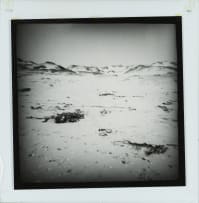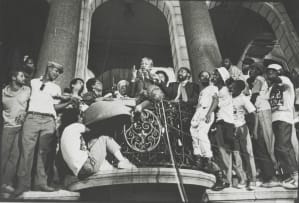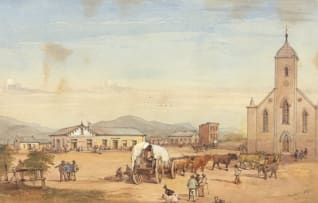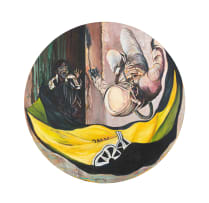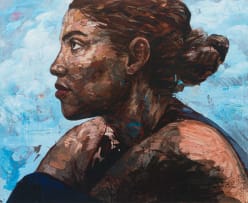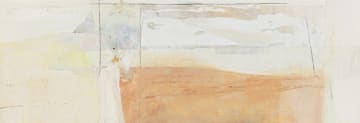March Art
Timed Online Auction, 1 - 11 March 2024
Art Club
About the SessionStep into the captivating realm of South African artistry in our monthly auction session, Art Club. Featuring esteemed talents like Mongezi Ncaphayi, Zander Blom and Nelson Makamo, each piece resonates with cultural depth and creative flair.
Other works of interest are a trio of striking landscapes by Vera Volschenk, each coming onto the market with attractive estimates: The Sleeping Beauty - Riversdale (estimate R3 000 - 5 000), Arbeidsgenot (Dist Riversdale) (estimate R5 000 - 7 000), and The Lagoon – Nature’s Valley (estimate at R5 000 - 7 000).
“Another standout piece of the Art Club session is Colony II (estimate R50 000 - 70 000) by Penny Siopis. This woven mohair tapestry is part of Siopis’s early 1990s Colony series. Created by the Marguerite Stephens Tapestry Studios, it measures 137cm x 150cm x 1.5cm and features inscriptions with the names of the weavers, Lillian Simelan and Gladys Ntontela,” says Kayleen Wrigley, sale lead and Strauss & Co specialist.
Scroll down to discover more.
Strauss & Co’s March ART timed online sale closes in 1-minute intervals from 2 pm on Monday, 11 March 2024.
Incl. Buyer's Premium & VAT
About this Item
Notes
"I started photographing with my Diana camera in 1990, after losing all my photographic equipment in a burglary - initially, simply to continue photographing. But even after replacing my equipment, my 'archive' of Diana photographs continued to grow alongside my other work. Sometime later, I read a wonderful essay by Richard Avedon - Borrowed Dogs - where he talks about his family album pictures. He observes that in every photograph - and family photographs were important events - they were in front of a house or car that wasn't theirs, and always with a dog. In one year of pictures he counted 11 different dogs, none of which belonged to them. They had never owned dogs. He says that all the photographs in his family album were a fiction, a lie about who they were, but the truth about who they desired to be. That interested me and I started thinking about photography more critically - its different practices, different conventions, all in service to different interests and different 'truths'.
Diana was intended to raise questions about what we expect from photographs, particularly in relation to how history and memory have been constructed in South Africa through documentary photography, which privileged ideas of objectivity and truth. In Diana, both the subject matter - the incidental, the everyday of ordinary life - and the mode - seemingly random 'snaps' - challenged some of the conventional notions of how photographs should look and function. Ironically (one does not usually associate the snapshot with any degree of photographic skill), the Diana, with its fixed focus, plastic lens, light leaks and no exposure controls save 'sunny' and 'cloudy' dials, was not an easy camera to use. My first pictures were terrible and I had to rethink how I saw the world, also in photographic terms, and find a new approach to making images.
The installation contained 50 photographs (each 50 x 50cm) suspended back to back between sheets of glass. These 25 double-sided 'frames' were suspended from the ceiling in five rows, each one metre apart."
- Jo Ractliffe
STEVENSON | Jo Ractliffe accessed 20/02/2024



